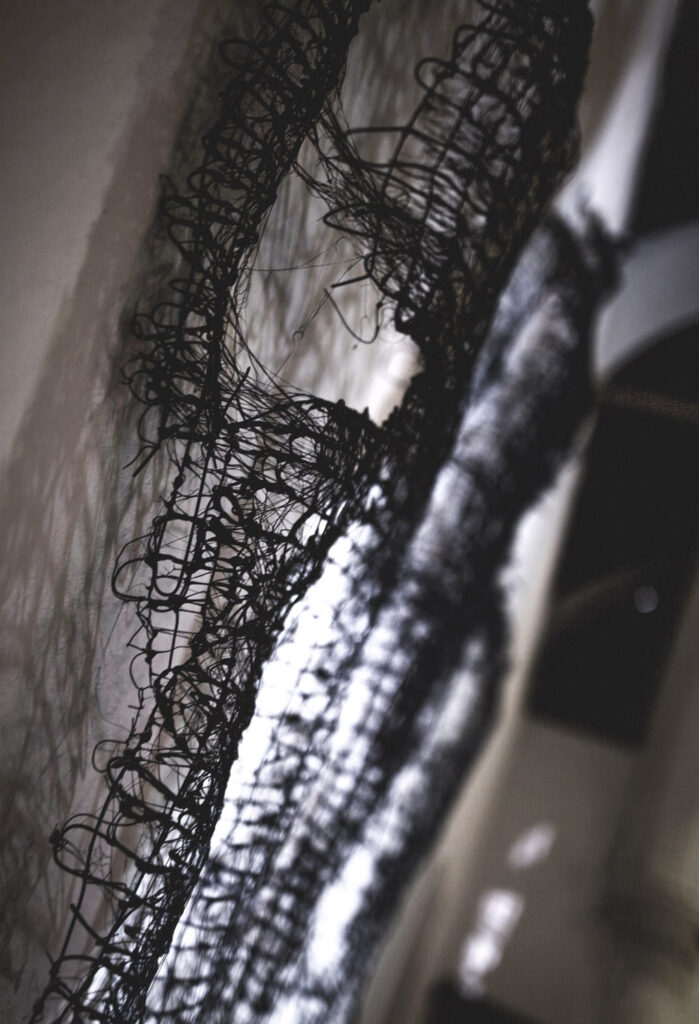Technical aspects:
The installation consists of two parts: sculpture and electronic devices. Materials used: steel wire, plaster, wood, glue, paint, radio, amplifier, arduino, sensor, servos, speakers, lights.
Plaster body casts were taken of real people: one male and one female form. A steel wire was used to create an unique mesh. The steel mesh was moulded into body casts with layers of hot glue and paint applied afterwards. The steel wire sculpture works as a radio aerial with an ultrasonic distance sensor used to control and change radio frequencies. An amplifier and large external speakers generate deep and live sound. Arduino (an open-source electronic prototyping platform) received signals from a distance sensor and sent them to servos. One servo was attached to the radio frequency knob and other to the sculpture. By standing in front of the distance sensor and moving back and forth a viewer will change radio frequencies and at the same time will make the wire sculpture move and shiver without any physical contact.
Conceptual aspects:
Highly populated cities like London are full of technology and human-made objects, and there is an invisible world that comes with this technology. Radio waves, magnetic fields, sound waves and many more invisible forces impact our lives but are undetectable to a human eye. The sculpture represents humans and shows that radio waves are received and transmitted through human bodies. It visualises a quantity of information that goes through our flesh and bones every day. The ultrasonic distance sensor gives a contactless control. The loose wire aesthetic was chosen to give a viewer some understanding how this interactivity was made.
The work was exhibited at Islington Art Factory, London, April 2016.

